The best hybrid cars: PHEVs and regular hybrids rated
Hybrids combine the convenience of fossil fuel with the appeal of zero-emissions running. Which do we recommend?
News


by Matt Saunders and Murray Scullion
7 mins read
9 April 2025
Share
Recent world events have resulted in some good news for the buying public: new hybrid cars can now be sold in the UK until 2035.
At one point it looked like the powers that be would turn off the new hybrid supply in 2030. But why should you care?
Well, dear reader, hybrids deftly combine green emission ratings with low running costs and the ability to fill up in mere moments from a pump.
Appealing to private buyers and company car owners alike, the commercial success of hybrids has been quite a thing to witness over the past couple of decades.
Hybrids are popular for several reasons. They can save you money at the petrol pump and even significantly drive down how much benefit-in-kind (BIK) company car tax you pay.
That’s because hybrids boast lower emissions ratings, while others provide a useful electric-only range that helps make most of your daily motoring emissions-free.
We rate the Toyota Corolla as the best hybrid money can buy. It’s a car with a truly commendable reputation for reliability, and it offers huge MPG figures without the need to plug in.
1. Toyota Corolla
9

- Design9
- Interior8
- Performance8
- Ride & Handling8
- Costs9
Pros
Ride-handling balance spot on for a family hatch
Easy-to-use interior
Inoffensive design
Cons
Infotainment feels dated
Not especially roomy
CVT can make engine noise intrusive
Best for: dailyeconomy
Toyota is now well advanced with normalising hybrid power, and no car on sale does it better than the Corolla.
While the 2.0-litre does offers some performance gains, the 1.8 will be sufficient enough for most people.
It combines a healthy dose of visual style with strong perceived cabin quality and has been dynamically developed and tuned – quite successfully – for distinguishing ride and handling sophistication.
In its range-topping 2.0-litre hybrid form, it even performs with a bit of sporting edge. Alternatively, the more humble 1.8-litre hybrid (which even comes in Corolla Commercial van form, for those who need it) will routinely return a day-to-day 70mpg if you drive with one eye on efficiency.
All-round ownership credentials mean Corolla owners can feel equally as good about owning and driving as they do about their outgoings at the pump.
Read our Toyota Corolla review
Save money on a new Toyota Corolla with What Car?
Finance this car with Drivenfi
Latest Reviews

Mercedes-AMG CLE 53
8

Volkswagen Tiguan
7

Honda Civic Type R
9

Used BMW 3 Series Touring 2012-2019 review
9
Used BMW 3 Series Touring 2012-2019 review

Aston Martin Vantage Roadster
Read our review
Car review

Toyota Corolla Touring Sports
Toyota’s Brit-built crack at the Golf class is also a new-groove performance hybrid
Back to top
2. Volkswagen Golf eHybrid
9
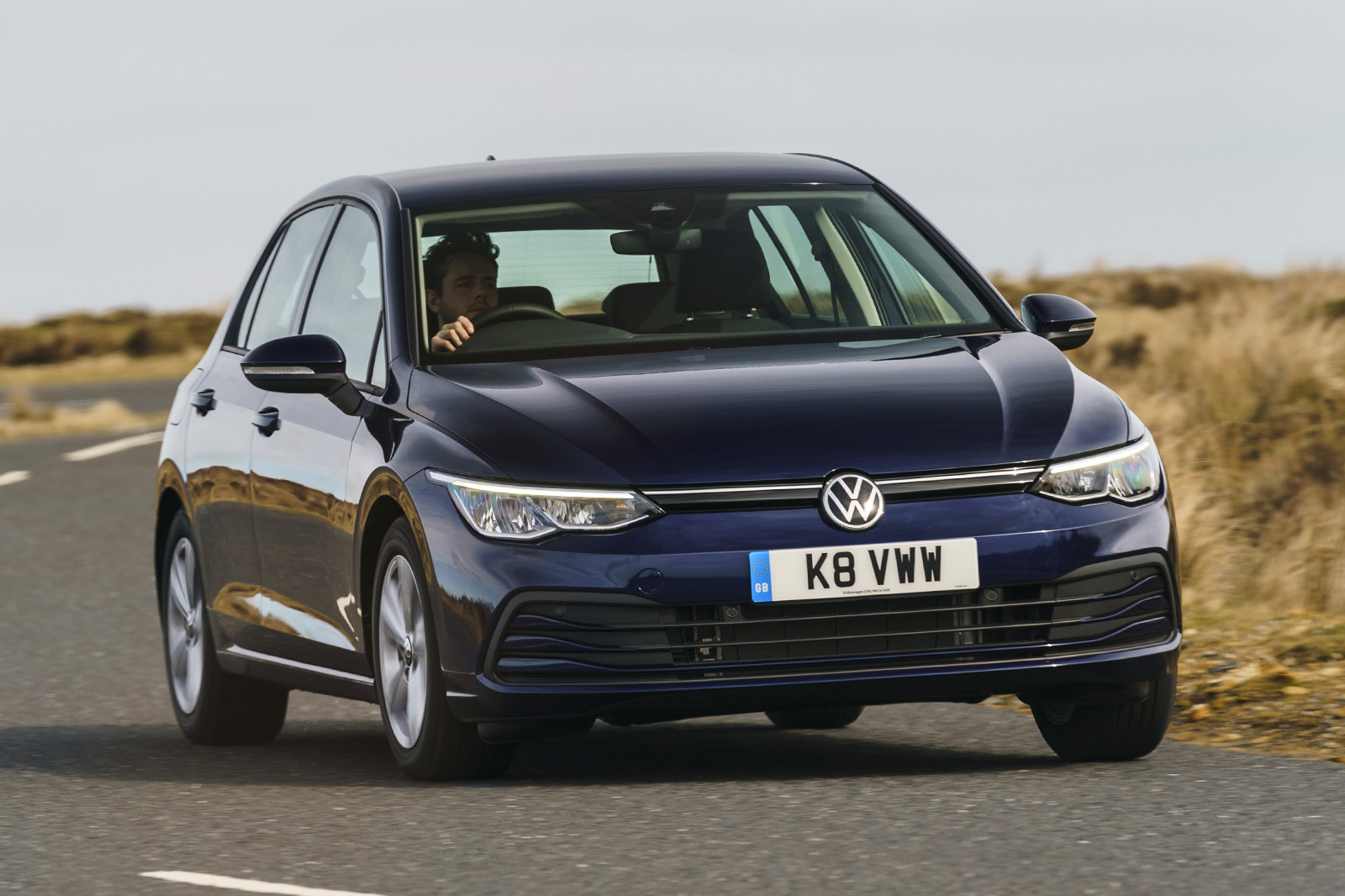
- Design8
- Interior8
- Performance8
- Ride & Handling8
- Costs8
Pros
Enormous electric range
Good infotainment
All-round ownership appeal
Cons
Cabin quality not quite what it used to be
Some doubts about tech reliability
Can get expensive
Best for: all-round ability
The latest Golf is a real return to form for what was the archetypal family hatchback. It comes in two PHEV forms, the 201bhp eHybrid and the 268bhp GTE, the former of which is our pick of the range.
I’m normally on team manual gearbox, but the automatic found in the PHEV just suits the Golf better.
It offers a simply enormous 88 miles of electric range in a package that drives well and has slick steering, assured handling and a reasonably supple ride.
And while it’s not a car that will have you grabbing the keys for an illicit B-road blast, its ability to effortlessly tackle any task is endearing, as is a chameleon-like quality to fit into any surroundings.
Downsides include the touchscreen infotainment is a little frustrating to use and hybrid variants get marginally less boot space, reduced to 273 litres.
Read our Volkswagen Golf eHybrid review
Save money on a new Volkswagen Golf with What Car?
Finance this car with Drivenfi
3. Volvo V60 T6
9

- Design8
- Interior9
- Performance8
- Ride & Handling8
- Costs8
Pros
Great combination of size, space and versatility
Efficient for a big car
Real-world electric range of 50 miles
Cons
Hybrid system uncouth at times
Ride comfort isn’t class-leading
Isn’t quite as practical as you might expect
Best for: versatility
You can spend rather a lot more money on a modern electrified Volvo than this, but the way this particular V60 combines grounded value for money with efficiency, usable electric range and everyday versatility reminds you of the very best family cars that the Swedish firm made so many decades ago, before it became preoccupied with sharp-edged modern design.
It’s ultra-responsive on electric power at lower speeds and refined under combustive power thereafter.
Who in their right mind would claim that 345bhp and 0-62mph in 5.4sec isn’t enough for their comfort-first family car, after all?
Who would object to ride and handling that pretty squarely aims at the first of those concepts at the expense of the second but disgraces itself at neither?
Who wouldn’t be delighted by a smart, appealing, well-packaged interior full of neat storage solutions and a 519-litre boot that comes with its own pop-up load-bay-organiser-cum-elasticated-bag-holder?
The V60 T6 Recharge seals the deal here with a hybrid system that delivers 55 miles of lab-verified electric range and plenty of associated running-cost savings potential.
Read our Volvo V60 T6 review
Save money on a new Volvo V60 with What Car?
Finance this car with Drivenfi
Back to top
4. BMW 550e
8
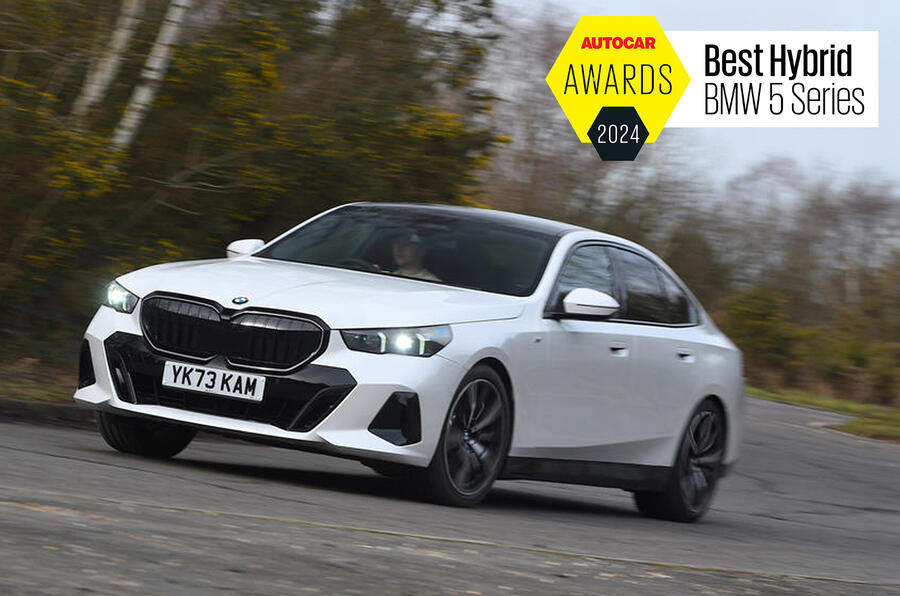
- Design8
- Interior7
- Performance9
- Ride & Handling9
- Costs7
Pros
Sonorous six-cylinder engine
Superb chassis balance
i7-esque isolation in EV mode
Cons
Not the most ergonomic interior
Electric range not brilliant
Can feel quite big on the road
Best for: long commutes
The BMW 5 Series is a real ‘have your cake, eat it and lose weight’ kind of car, and we think the 550e model is one of the best hybrids on sale today.
The 550e is savage when it comes to roll-on acceleration.
The engine range opens with a 2.0-litre four-pot petrol, available as a 205bhp mild-hybrid (badged 520i), followed by the 295bhp, plug-in hybrid 530e.
At the top of the range sits the 550e xDrive, which takes a 308bhp B58 six-cylinder petrol engine partnered with a 194bhp electric motor. Total output stands at 483bhp, meaning a 0-62mph time of 4.4sec.
Its strengths are its impressive handling and its cosseting ride, aided by adaptive dampers. Its engines are very refined too and offer substantial pace throughout the range, although the range-topping 550e is quite expensive.
Read our BMW 550e review
Save money on a new BMW 5 Series with What Car?
Finance this car with Drivenfi
5. Mercedes-Benz C300e
7

- Design8
- Interior9
- Performance7
- Ride & Handling8
- Costs8
Pros
Nearly 50 miles of EV range
Strong performance
Comfort and cruising refinement
Cons
Cargo space compromises
Limited driver appeal
Fit and finish not as good as you might think
Best for: interior opulence
Packing a drive battery twice the size of many of its PHEV rivals, this Mercedes-Benz C-Class model has an official electric range of up to 69 miles.
The chassis tune feels comfort-biased at all times, with plenty of suppleness, but it stops well short of floating or wallowing on cross-country roads.
The C300e’s powertrain comprises a 2.0-litre turbocharged petrol engine and a 127bhp electric motor and makes 308bhp in all, in a car that can crack 62mph from rest in just 6.1sec.
It’s available in both saloon and estate bodystyles, importantly with no significant compromise to either passenger or boot space from its extra PHEV hardware.
The C300e impressed our road testers with its refinement and isolation and with its laid-back, luxury-first, Mercedes S-Class-in-miniature vibes.
Keener drivers with less of an eye on their tax bills may probably still prefer to consider the likes of the BMW 330e, but for most fleet drivers and operators, the C300e’s excellent electric range is sure to make it a popular option.
Read our Mercedes-Benz C300e review
Save money on a new Mercedes C-Class with What Car?
Finance this car with Drivenfi
Back to top
6. Renault Clio E-Tech
9
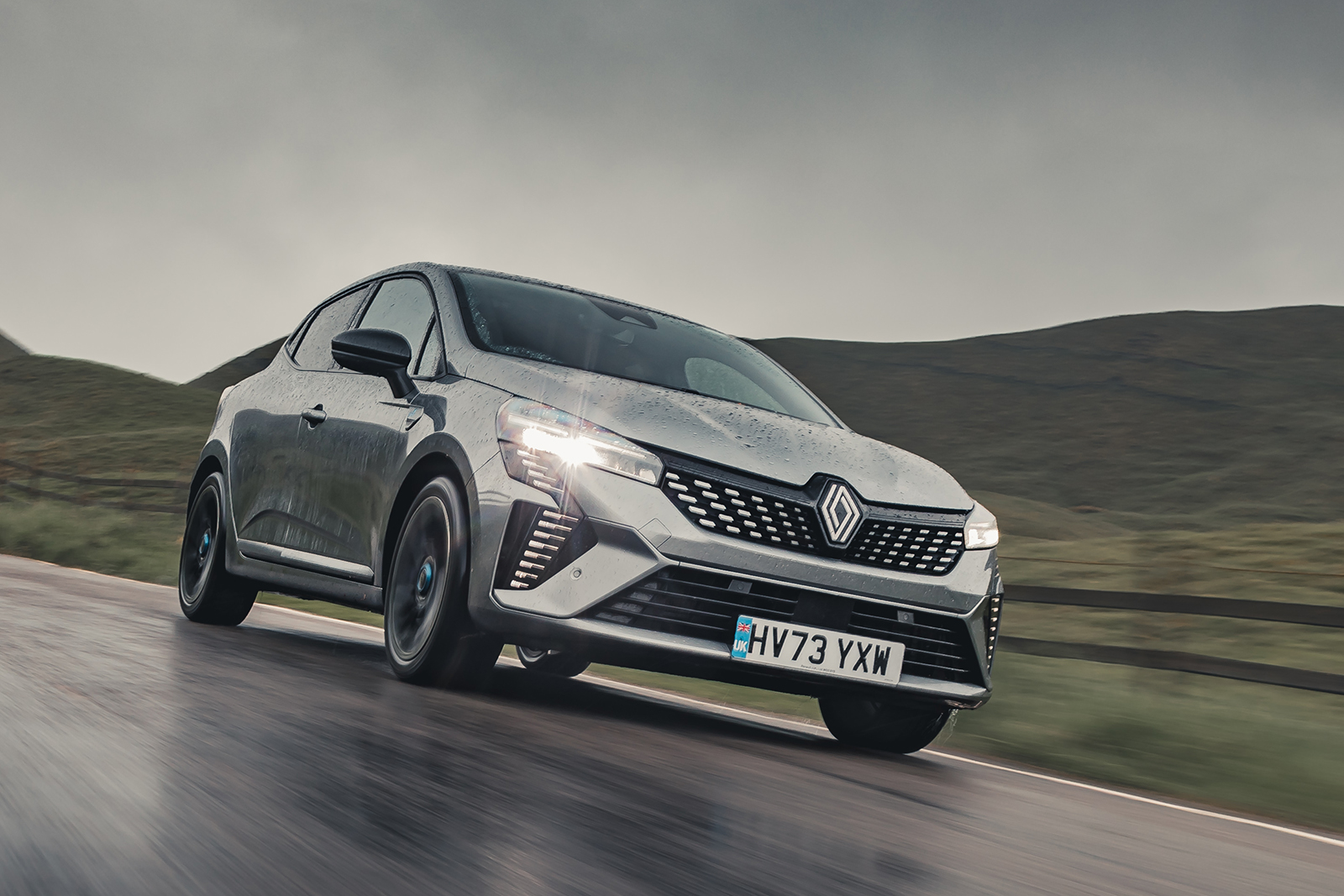
- Design9
- Interior8
- Performance7
- Ride & Handling8
- Costs9
Pros
Interior looks and feels the part
Hybrid drive is seemless
Efficient
Cons
Comfort drops to boost handling
Poor rear space
Uninspiring gearbox
Best for: supermini lovers
The Clio is the smallest car on this list and also the cheapest.
The Clio’s talents are best displayed at urban speeds, thanks to its excellent mid-range torque.
Badged E-Tech Full Hybrid, the hybrid version uses a 1.6-litre petrol engine and two electric motors, which combine to drive 143bhp and 151lb ft through the front wheels.
It can only be had with an automatic gearbox, but performance is strong. It will hit 0-62mph time of 9.3sec while boasting a 67.3mpg fuel consumption figure.
The Clio’s interior is stylish and comfortable, with an intuitive layout and useful buttons.
If you want to put your foot down, the Clio also holds itself well on the road. It’s agile and composed in the corners, and while it’s not quite as impressive as the Ford Fiesta once was, it’s engaging and fun in several scenarios.
Read our Renault Clio E-Tech review
Save money on a new Renault Clio with What Car?
Finance this car with Drivenfi
7. Honda Civic
8
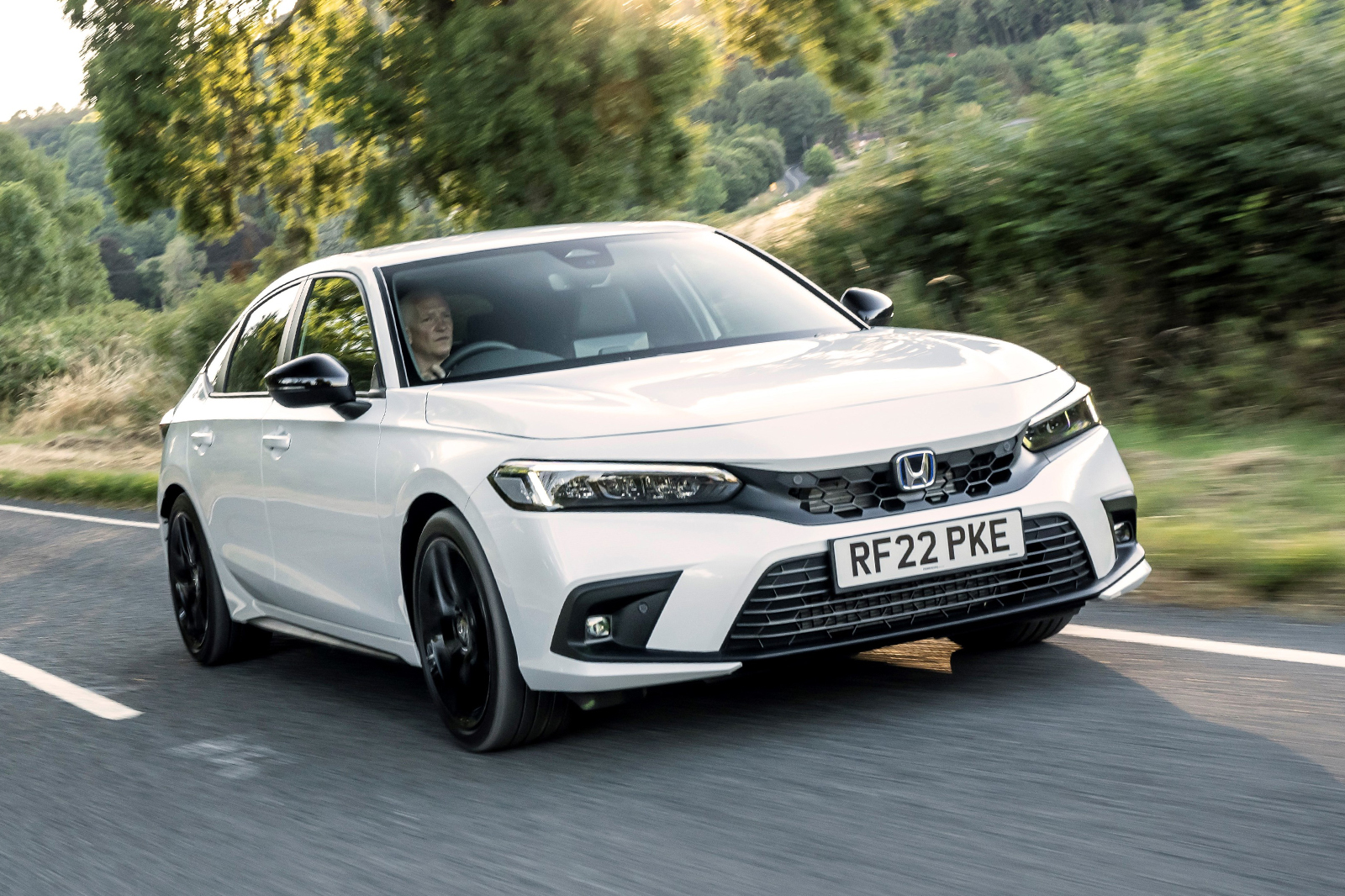
- Design8
- Interior8
- Performance8
- Ride & Handling8
- Costs7
Pros
Loads of space
Easy to drive efficiently
Impressive power
Cons
Lacks desirability
A few ergonomic foibles
Lack of choice
Best for: comfort
Despite the growing number of SUVs, Honda has stuck to the traditional family hatchback template for its latest Civic.
The engine is complex. Sometimes the gearbox behaves like a CVT. Sometimes it’s like a traditional automatic gearbox. But most of the time you’re not aware of it.
Incredibly, the Japanese machine is in its 11th generation, but it shows no signs of slowing down or resting on its laurels.
Like the HR-V crossover and Jazz supermini, it uses Honda’s clever e:HEV drivetrain, which in most situations uses the 2.0-litre four-cylinder petrol engine as a generator for a 1.05kWh battery that powers an 181bhp electric drive motor.
The Civic is much better to drive than many of its rivals. It offers engaging handling, quick steering and impressive body control. Thanks to its composed ride, it’s also one of the most comfortable hatchbacks on sale.
Read our Honda Civic review
Save money on a new Honda Civic with What Car?
Finance this car with Drivenfi
Back to top
8. Toyota C-HR
7
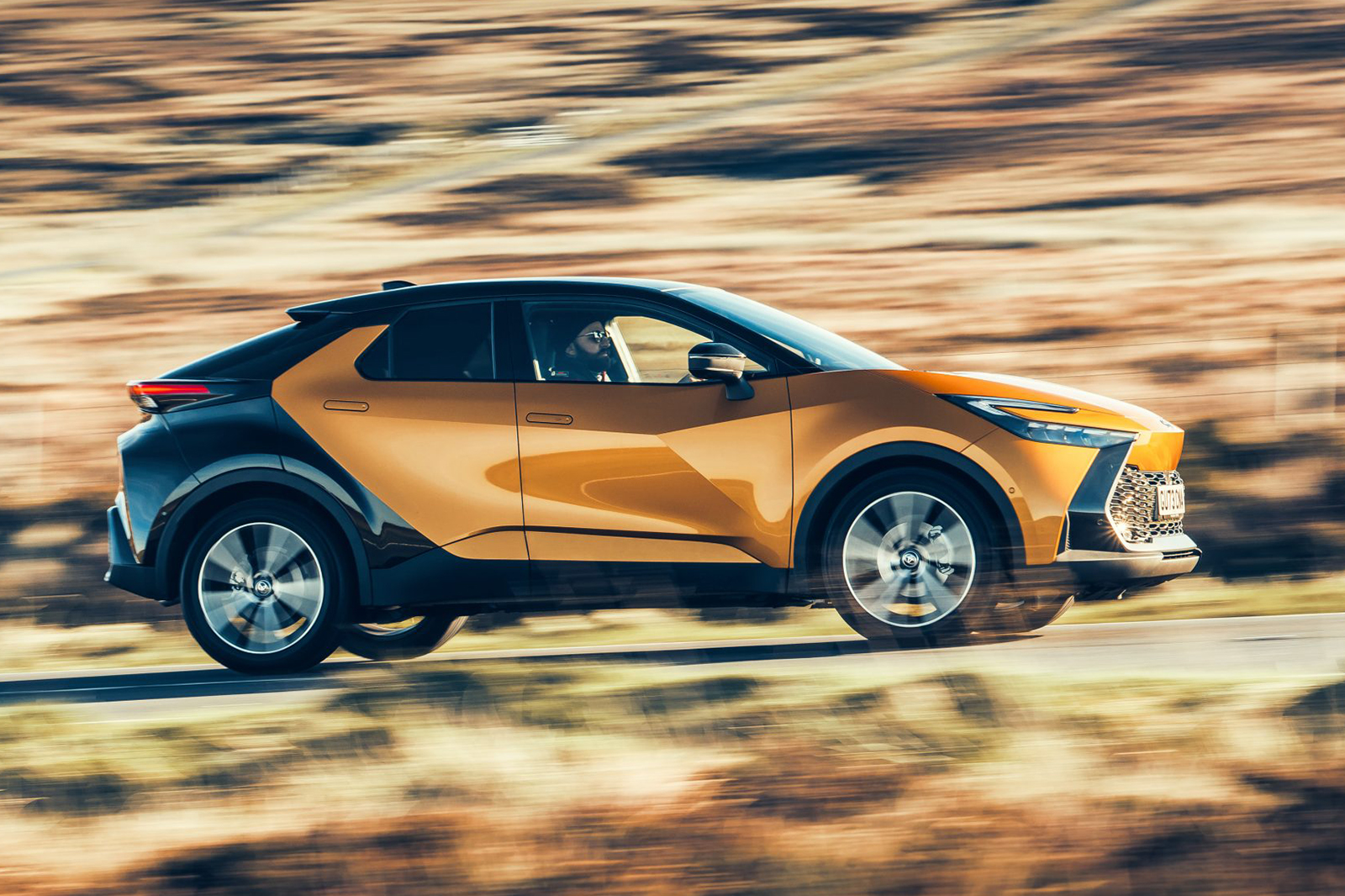
- Design8
- Interior7
- Performance7
- Ride & Handling8
- Costs8
Pros
Impactful styling
Engaging and refined to drive
Very efficient
Cons
Not the most spacious
Interior quality could be better
Rivals are better to drive
Best for: efficiency
The C-HR was designed to tap into the growing demand for compact crossovers. Renewed for a second generation in 2023, it now has broadened kerbside appeal and a plug-in hybrid option.
Toyota’s fashionable crossover cuts a dash, rides and handles well and has strong hybrid and PHEV powertrains.
So, in addition to 1.8-litre and 2.0-litre ‘self-charging’ hybrid options, there’s a 2.0-litre PHEV with a little more power than its rangemates and just enough electric range to enter the 8% BIK tax bracket.
The C-HR has even more impactful styling in this generation, but its size and its dynamism continue as they were. It splits the difference between the B- and C-segments (Ford Puma size and Nissan Qashqai size).
Its rear cabin and boot aren’t huge, but it does carry itself well. It can be both refined and engaging to drive on a decent stretch of road.
The hybrid powertrain at the car’s heart is never the primary source of any enjoyment you’re likely to have at the wheel, but the C-HR offers enough wider appeal to stand out in any case.
Read our Toyota C-HR review
Save money on a new Toyota C-HR with What Car?
Finance this car with Drivenfi
9. Mercedes-Benz E300e
7
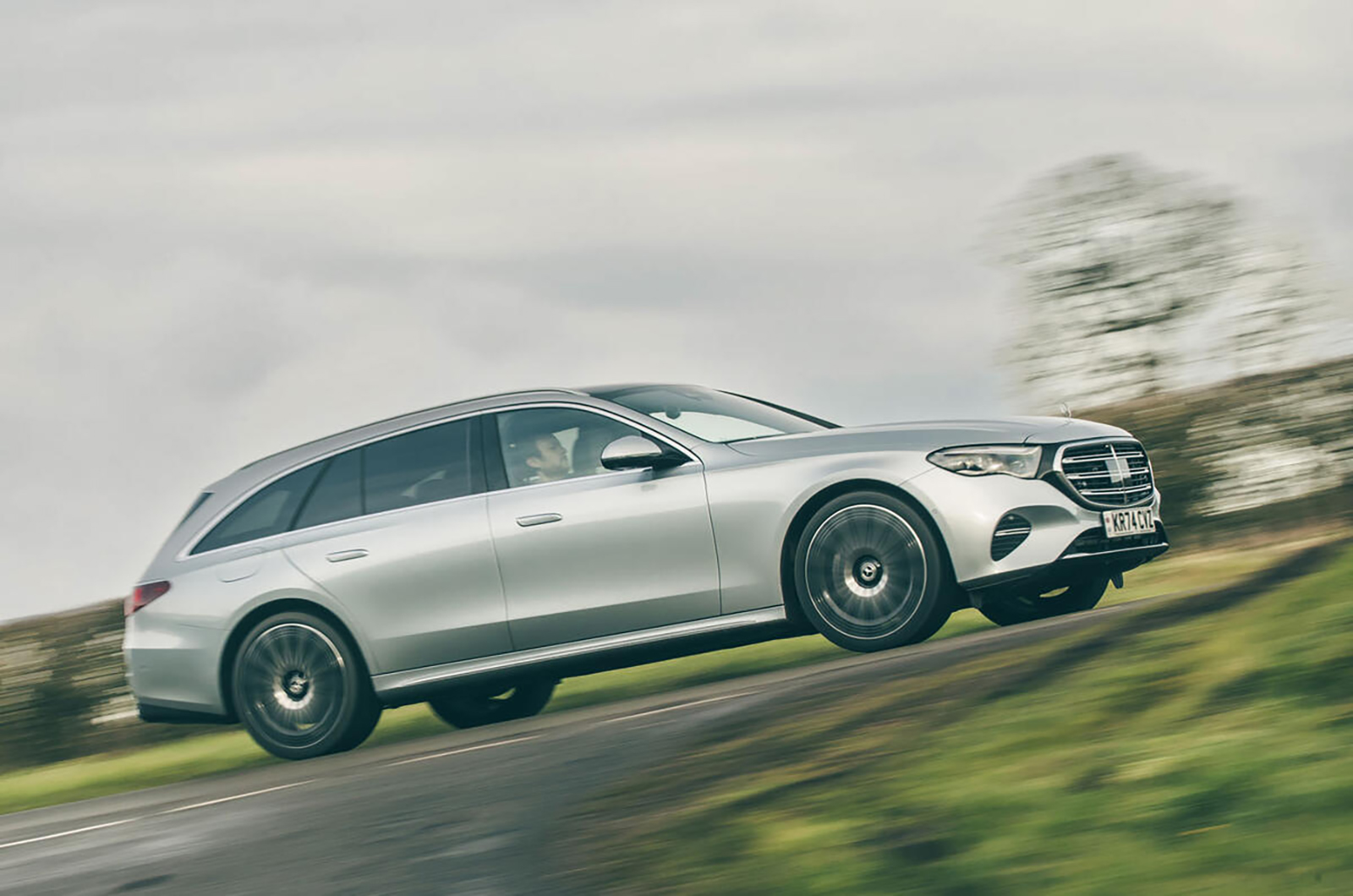
- Design8
- Interior9
- Performance8
- Ride & Handling8
- Costs8
Pros
Plenty of design appeal
Impressive tech
Useful electric range
Cons
Inconsistent ride quality
Relatively expensive
Gearbox sometimes not responsive enough
Best for: BIK busting
The new car market is moving at an alarming pace. New brands are the new norm, all with their different marketing strategies and reasons to buy.
Cutting-edge tech and quality interior marry up with a frugal PHEV powertrain.
The E-Class goes against this and offers steadfast adherence to what it has always done: provide drivers with quality, comfort, space and refinement.
The E300e is the one to go for company car drivers. It’s rated for 70 miles of EV range and is one of the very few PHEVs to offer 5% company car tax.
It’s frugal in real-world conditions too. We averaged 45.5mpg in most of our testing and frequently saw 60mpg – which makes for a near-900-mile total range.
It averaged 3.0mpkWh in EV mode too – a figure that some pure EVs would be jealous of.
Read our Mercedes-Benz E300e review
Save money on a new Mercedes-Benz E-Class with What Car?
Finance this car with Drivenfi
Back to top
10. Skoda Kodiaq iV
8
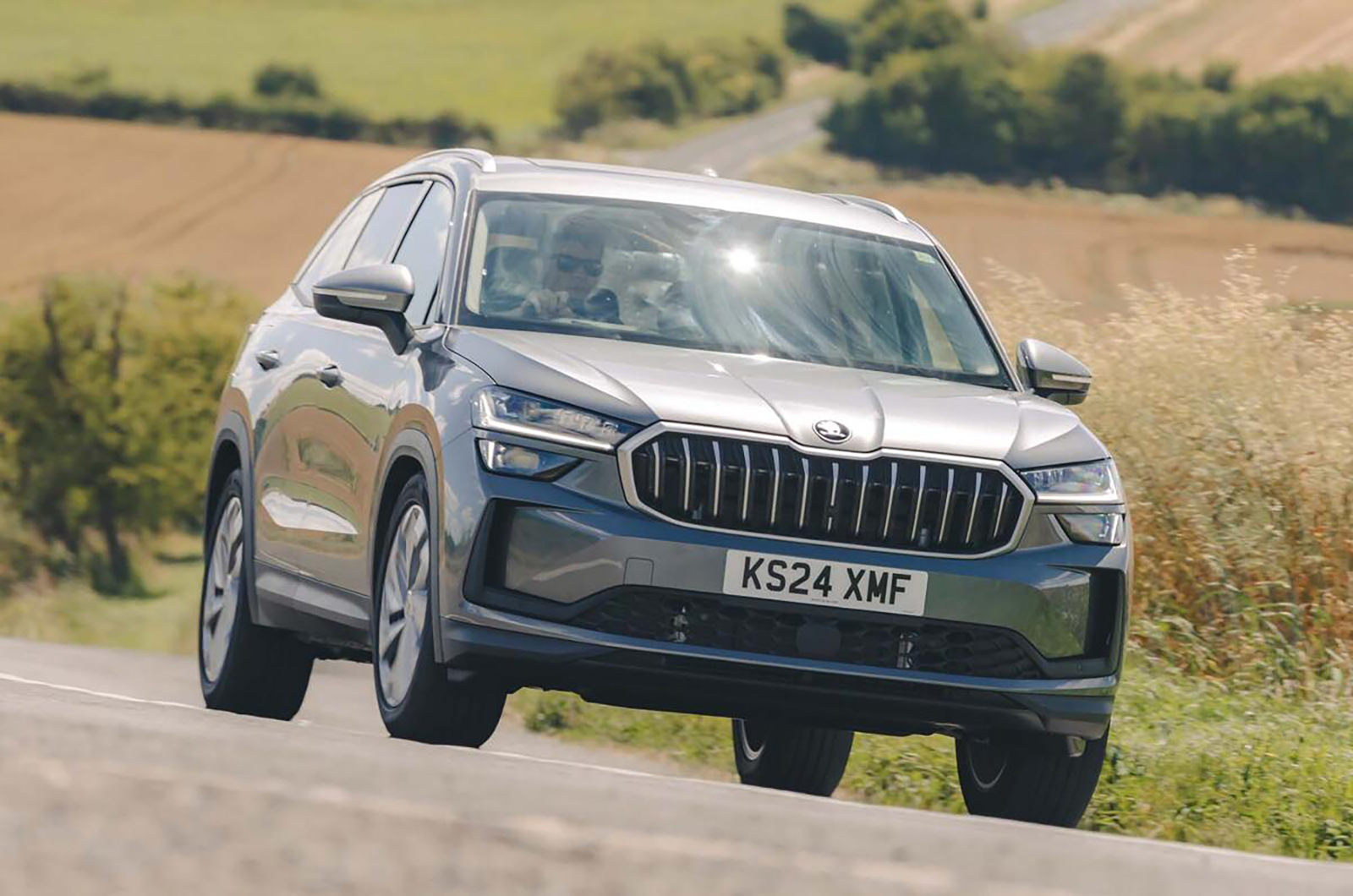
- Design8
- Interior7
- Performance7
- Ride & Handling8
- Costs8
Pros
Roomy and practical
PHEV has unrivalled electric range
Controls are easy to use
Cons
Doesn’t ride as well as it should
Too many drive modes
PHEV doesn’t get seven seats
Best for: SUV practicality
The Volkswagen Tiguan, Volkswagen Passat, Skoda Superb and Skoda Kodiaq are all based on the same platform and have the same powertrains.
Range and charging speeds put the Kodiaq streets ahead of its rivals.
In the Kodiaq, the PHEV one is rated for an admirable 71 miles of range, making it unrivalled in its class.
Skoda’s SUV gets the nod on this list because of its practical, tall body. It’s hugely suited to family life and there’s room in the middle row to rival the Mercedes S-Class.
The boot is enormous, at 745 litres, but you won’t get the option of seven seats. That’s reserved for the non-PHEV models, sadly.



